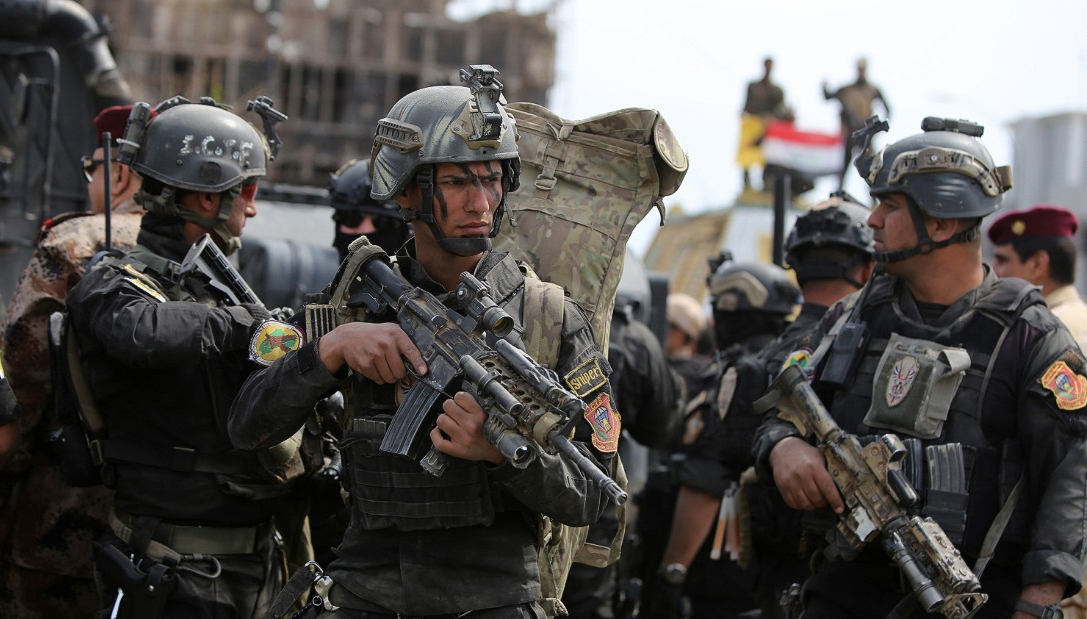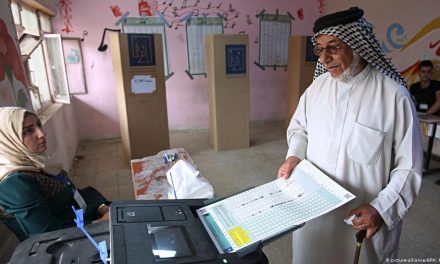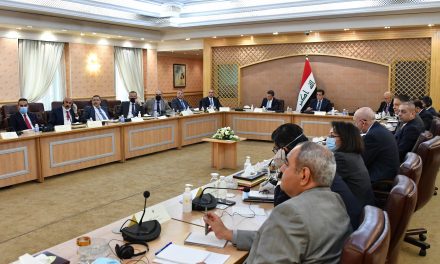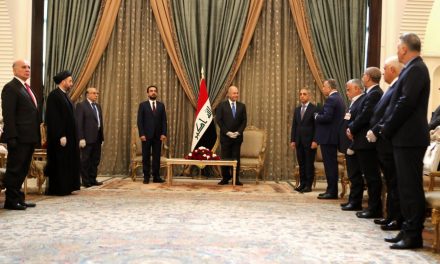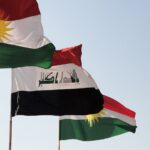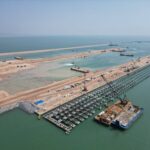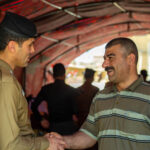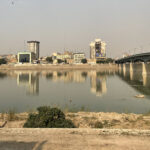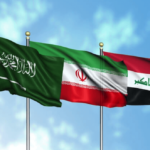Iraqi Special Operations Forces (Ahmed Al-Rubaye/AFP)
The Iraqi-led campaign to defeat the Islamic State’s political project has been a remarkable success, in ways that many observers could not have imagined in the dark days of 2014. Nonetheless, even the most optimistic observer would agree that the war is not over. The Islamic State’s revival following their previous defeat (circa 2008) is a reminder to all what can happen if the appropriate attention is not paid to the threat of another resurgence. Furthermore, there is plenty of evidence that the Islamic State has been engaged in a full transition from a proto-state with governing structures, to the lean structure of a networked guerilla army over the last six months, intent on building for another challenge.
Having decisively defeated the conventional forces of the Islamic State, it is important for the anti-Daesh coalition to match the Islamic State’s transition with one of its own. Unlike the recent campaign, where the coalition’s force defeated the caliphate in a largely conventional style – including heavy urban combat, the next phase of conflict will be dominated by an irregular style of warfare. The question is, will the Iraqi security forces be ready?
Transitions are a tricky thing. Clausewitz used the sport of wrestling as an analogy for war, depicting two opponents matching move and countermove in a seamless choreography of motion. Good wrestlers strike during transitions, between move and countermove. A recent and pertinent example of the importance of transitions might be the United States’ invasion of Iraq in 2003, where the lack of a coherent follow-on plan allowed multiple actors to emerge to challenge a stable political transition. The inordinate amount of time it took for the coalition to adjust to a different strategic environment than planned had tremendous strategic and moral consequences for the population and others. While much of this can be traced back to poor policy formation on the part of the U.S. administration at the time, it is further compounded by the fact that campaigner planners, like wrestlers, can only consider a certain number of moves ahead of time, since the nature of conflict makes them dependent on what their opponents do in turn.
So what capabilities do the Iraqi security forces need for the coming phase of uniformly irregular warfare? The Iraqis have a capable enough regular army force that will deter Islamic State forces from controlling territory for more than a few hours, and an outstanding counterterrorism service (CTS or special operations) that is currently retraining to execute discrete strikes against the Islamic State’s organizational infrastructure. There are border forces to prevent smuggling and new flows of foreign fighters and equipment, as well as local and federal police units, including specialized police (SWAT), to address crime control and terror incidents. Finally, there is the Hashd al Sha’abi – the Popular Mobilization Forces (PMF) – that provides a mobile reserve of irregular and conventionally trained and equipped fighters to counter IS around the country.
While this array of forces defeated the Islamic State proto-state in 2017, it is not trained, equipped, or distributed enough to defeat the efforts of a transformed Islamic State insurgency as it coalesces at the local level. A look at the Islamic State’s past can show us why this might be the case.
The Post-Surge Islamic State of Iraq
The Islamic State of Iraq (ISI) in 2008 was defeated in almost every way imaginable. Its fighters deserted in droves, it no longer held cities like Ramadi, its political project was largely rejected by insurgent rivals and tribes alike, and its leaders were deep in hiding in the Tharthar region of central Iraq. Much like today, there was a plethora of news articles celebrating the rejection of the al Qaeda linked group by the Sunni Iraqis writ large. The ISI leadership, after some intense deliberation and thought, developed a new strategy designed to “improve the political position of the Islamic State of Iraq.” The tenets of this new strategy centered on defeating their local Sunni rivals and carving out new influence areas in their wake, while ignoring the Americans who were leaving, and using terror strikes in Baghdad to discredit the government. All of this would be accompanied by a new propaganda effort justifying this effort, led by a recently paroled veteran of the movement, Abu Muhammad al-Adnani. To copy an American political mantra from the 1990s, the ISI’s motto could have been “it’s the local fight, stupid.”
The value of local information and control was not lost on the successful counterinsurgents of 2007-8, who relied on their new allies the Sunni Sahwa as a first line of defense to keep the former Al Qaeda franchise on the back foot. This mixed force of civilians, former insurgents, and farmers with guns were backed up by local police, specialized police units, regular army units, and infrequently, raids by the Iraq special forces. For example, in the Jurf ah Sakhr area I studied for my research, there was a significant investment of security forces in the strategic area close to Shia pilgrimage routes by 2009 that should have stopped any ISI push cold. And yet, as my research documented, by 2011 the Islamic State had decimated the local Sahwa using mobile assassination squads (reputedly led by the infamous Haji Bakr) that tied in with local clandestine agents to eviscerate the local government sanctioned militia. By 2012, Iraqi security forces, without the assistance and intelligence provided by the now collapsed Sahwa force, lost the initiative to the insurgents and had no choice but to conduct large unit sweeps through contested areas in a fruitless effort to combat the guerillas. Casualties in the regular security forces operating in the Jurf district skyrocketed after 2012, and by 2014 the area was largely accepted as an Islamic State “support zone.”
The question remains: how did the Sahwa, an irregular force with relatively good intelligence on their Islamic State foes, lose out to their Sunni rivals? The answer to this question will help us understand what kind of transition needs to happen next.
The rise of the Sahwa movement in 2006 was a surprise to most observers, who had seen similar efforts crushed brutally by al Qaeda in Iraq. Abu Musab al Zarqawi had personally warned select Sunni leaders in 2005 not to “sow division and discord between the mujahideen and the tribes.” The Sahwa’s drastic decision to break toward collaboration with the government was a game changer, and their close to insider knowledge of their foe forced the newly proclaimed Islamic State of Iraq to flee many of its core areas, with extensive losses. Unfortunately, this effect was transitory, and in time, the ISI’s efforts to regain their footing were extremely successful due to a clever strategy designed to target a key Sahwa vulnerability – its fragmented and overly localized structure. Put simply, the ISI goal was to split sympathetic or ambitious tribal members from their tribes, the tribes from their former insurgent partners, and all of these elements from the government.
Since the Sahwa networks were local in character, the ISI was able to leverage the asymmetry of its wider national network to defeat the Sahwa network in its weakest areas – predominantly in North Babil and Diyala, where sectarian tensions diluted support for the government militia (the group largely ignored Anbar province until political conditions were more conducive, around 2013). These operations could be directed and funded by ISI leaders running the financial extraction enterprise in Mosul (where there was no Sahwa force), as well as from the ISI logistics bases in Syria. The disparate nature of each local Sahwa element, and its poor coordination and communication with government forces, made it difficult to ascertain the nature of the ISI threat until it was much too late. As Carter Malkesian writes in his recent book Illusions of Victory, the idea that feuding and self-interested tribal leaders could hold the security situation in the provinces together for an extensive period of time was simply too aspirational and ungrounded in deeper (and in some cases dysfunctional) structural dynamics.
Stopping an Islamic State Resurgence Early – the Gap in Local forces
Let us fast forward to 2018 and ask: how does Iraq create a better local force to defeat the Islamic State’s irregular warfare doctrine, one that improves on the Sahwa model? The strength of the Sahwa was its local character and the associated knowledge of the people and the terrain that comes with it, which in turn neutralizes a historic advantage all insurgents possess. Relying on the unpopularity of the failed caliphate is a bad idea, however powerful that perception is in the current environment. The security risk of an Islamic State resurgence, high or low, needs to be addressed now. As an American advisor in Vietnam famously put it, “security may be ten percent of the problem, or it may be ninety percent, but whichever it is, it’s the first ten percent or the first ninety percent.”
Reviewing the current state of security elements arrayed against the Islamic State on the Iraqi side of the border, the only irregular style units that have the local character and knowledge required to perform area security (or “holding” as in clear, build, hold) missions in former Islamic State strongholds are the estimated 30-45,000 Sunni members of the Hashd al Sha’abi. Many of these forces serve in tribally based units, and serve in their local areas under the control and coordination of larger, more powerful Hashd units in what one American advisor to tribal mobilization in Iraq calls “the rent to own program.” The ability to work in conjunction with local police forces holds some promise for filling this gap in local capacity, by creating local units that have close ties to a national support network capable of reinforcement and other resources. Their ties to larger Hashd forces is also an improvement over the Sahwa model since forces can be surged to areas under siege by the Islamic State.
On the other hand, several familiar factors threaten the success of government aligned local forces in forestalling yet another Islamic State comeback. First, the largely tribal nature of these forces generates the same centrifugal forces that affected the Sahwa, and often motivates rival tribes not in the Hashd to consider allying with the insurgents to protect turf and economic activities. Second, the current numbers of the tribal mobilization forces are around half of the original Sahwa force, which was found wanting in capability in an era that saw a more degraded Islamic State movement then exists today. Third, the Hashd elements have to eventually overcome the sectarian taint of working for the more prominent Iranian influenced Hashd elements, a fact that fits nicely into past and future Islamic State propaganda. Despite the Islamic State’s nature as a transnational movement, it hypocritically relies on barely hidden racial themes promoting Iraqi nationalism (over foreign interference) and Arab superiority. Working for the “Safavids,” as Islamic State calls these units and their sponsors, could degrade local support for the Sunni Hashd units much like it did for the Sahwa “collaborators.” Finally, the desire of many actors (national and international) to reduce or disband the PMU leaves it vulnerable to the same destabilizing factors that short circuited the pro-government Sahwa movement. Even if the status quo for the PMU remains, its own internal fragmentary nature too closely resembles the tribal diversity of the Sahwa that turned out to be little match for an organized, coherent, and strategically adept Islamic State organization before the fall of Mosul in 2014.
The war is over, and a new one begun in one sense. My brief and simplistic analysis indicates there is a gap in the type of capability that will be needed to keep the Islamic State in its current state of low activity. How this gap will be filled, I can’t say for sure. As always in war, politics will drive the creation of forces, their manning and character, and the tasks that they are given in order to achieve the political objective. One can hope that to prevent a repeat of recent events, we learn from these observations and others about how to engender security amongst local populations in order to keep the Islamic State down, and permanently out.

Craig Whiteside
Dr. Craig Whiteside teaches national security for the Naval War College Monterey at the Naval Postgraduate School, in Monterey, California. He is also an associate fellow at the International Center for Counterterrorism-The Hague. He spent part of 2006 and all of 2007 in Iraq, in the Iskandariyah, Musayyib, and Jurf ah Sakhr area, and would like to return some day to see his friends.

